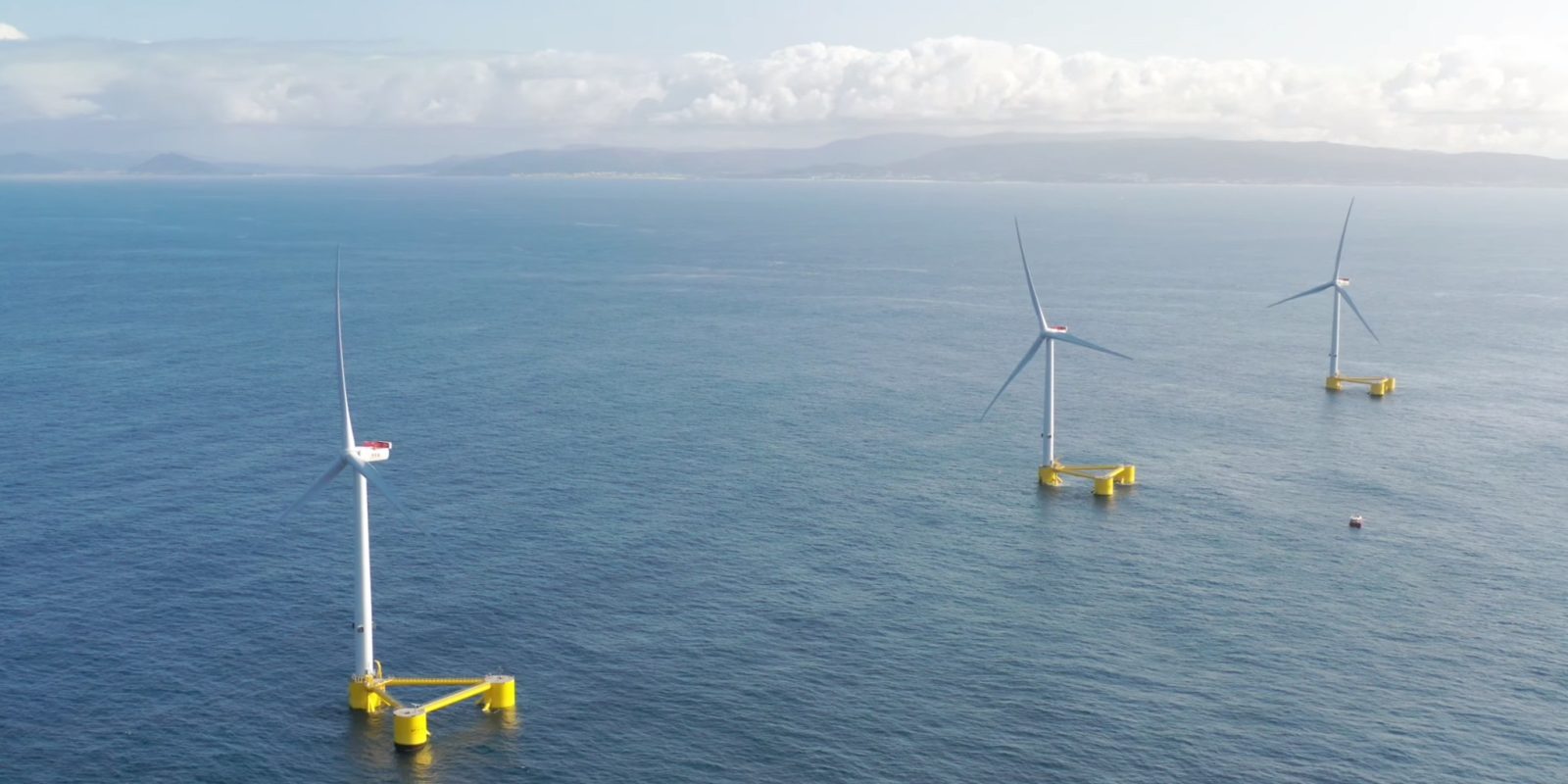
WindFloat Atlantic – the world’s first semi-submersible floating offshore wind farm – has now been online for three years and continues to break its own power output records.
The 25 megawatt (MW) WindFloat Atlantic project ended 2023 with an electricity production of 80 gigawatt hours (GWh), surpassing 2022’s output of 78 GWh. It supplies power to more than 25,000 households and avoids 33,000 tons of carbon dioxide.
The offshore wind farm sits 20 km off the coast of Portugal in the municipality of Viana do Castelo, north of Porto. It comprises three 8.4 megawatt (MW) Vestas wind turbines that sit on semi-submersible, three-column floating platforms anchored by chains to the seabed. A 20 km long (12.4 mile-long) cable connects it to an onshore substation.
It’s a joint venture between Spanish renewable company EDPR, global energy firm ENGIE, Spanish energy firm Repsol, and California-headquartered floating offshore wind firm Principle Power.
WindFloat Atlantic was connected to the grid at the end of 2019 and commissioned in 2020. It has an operations and maintenance base in the port of Viana do Castelo, where the team receives the wind farm’s information in real-time so they can address issues immediately. Onsite intervention can be complex, due to adverse weather and sea conditions in the area where it’s sited.
WindFloat Atlantic was robust in the face of Storm Ciarán, which tore through Europe at the end of October and beginning of November last year, thanks to a powerful jet stream that came in from the Atlantic. The floating wind farm weathered wave heights of 20 meters (66 feet) and wind gusts up to 139 km/hr (86 mph).
Principle Power, which also worked on Scotland’s Kincardine, the world’s largest floating offshore wind farm, explains what makes semi-submersible floating offshore wind unique:
The WindFloat has been developed specifically to achieve exceptional stability performance, while reducing structural weight, and simplifying logistics during installation and operation.
The virtual pitch- and yaw-free performance in the offshore environment allows the use of existing commercial offshore wind turbines, located at one of the columns, with only minor modifications to control software.
To limit power outages and make your home more resilient, consider going solar with a battery storage system. In order to find a trusted, reliable solar installer near you that offers competitive pricing, check out EnergySage, a free service that makes it easy for you to go solar. They have hundreds of pre-vetted solar installers competing for your business, ensuring you get high quality solutions and save 20-30% compared to going it alone. Plus, it’s free to use and you won’t get sales calls until you select an installer and you share your phone number with them.
Your personalized solar quotes are easy to compare online and you’ll get access to unbiased Energy Advisers to help you every step of the way. Get started here. – ad*
FTC: We use income earning auto affiliate links. More.



Comments